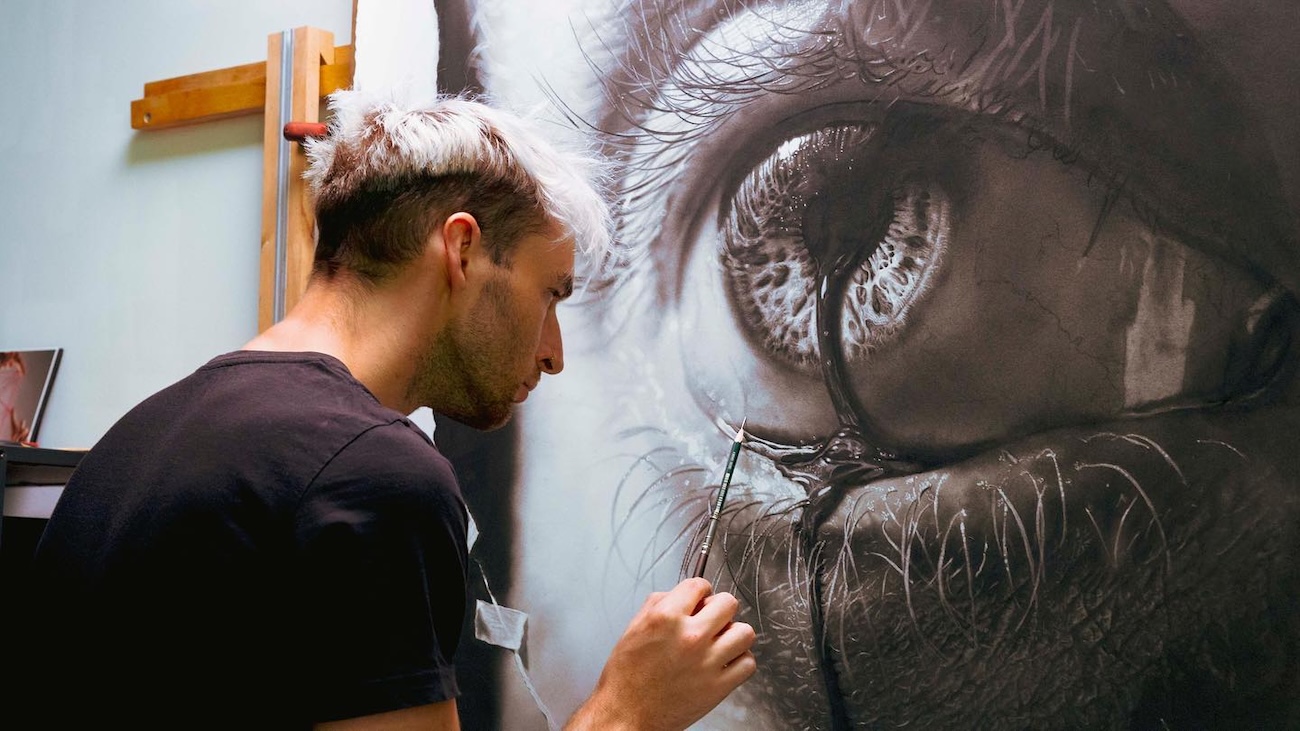
Jono Dry working on “I Can Fix This”
Hyperrealistic drawing combines technical skill and the determination to depict something exactly as the human eye sees it. While that alone is impressive, adding an element of surrealism makes it both technically awe-inspiring and stimulates our intellectual curiosity. South African artist Jono Dry creates drawings so masterfully hyperrealistic that you’d think they were photographs if not for their very surreal elements.
Dry’s experience with hyperrealistic art began in high school when he had a group of friends who were equally enthusiastic about the approach. He continued to hone his abilities and now infuses a sense of surrealism into his large-scale drawings. In a piece titled Tear Duck, a tiny toy duck floats in a pond of a tearful eye, while Capturing Stillness features a freeze-frame of a minuscule hummingbird staring directly into a large human eye. Both perfectly capture how light reflects on an eye and illuminates the lashes, iris, and beyond.
Playfulness and a positive approach to failure are two important components of Dry’s practice, in drawing as well as other areas of art. “It started to happen in my practice quite a bit with experimenting with sculpture,” he tells My Modern Met, “and I feel like I’m knocking on the door of breaking through to quite a large, multi-media form of expression.” His desire to forge a path in other media is a collaborative effort. Dry and his team are inspired to create installations and sculptures that tie into storytelling and a sense of wonder—just like Dry’s drawings.
We spoke with Dry about his artistic background, one of his most iconic pieces, and a new community-building endeavor. Scroll down to read My Modern Met’s exclusive interview, which has been edited for length and clarity.
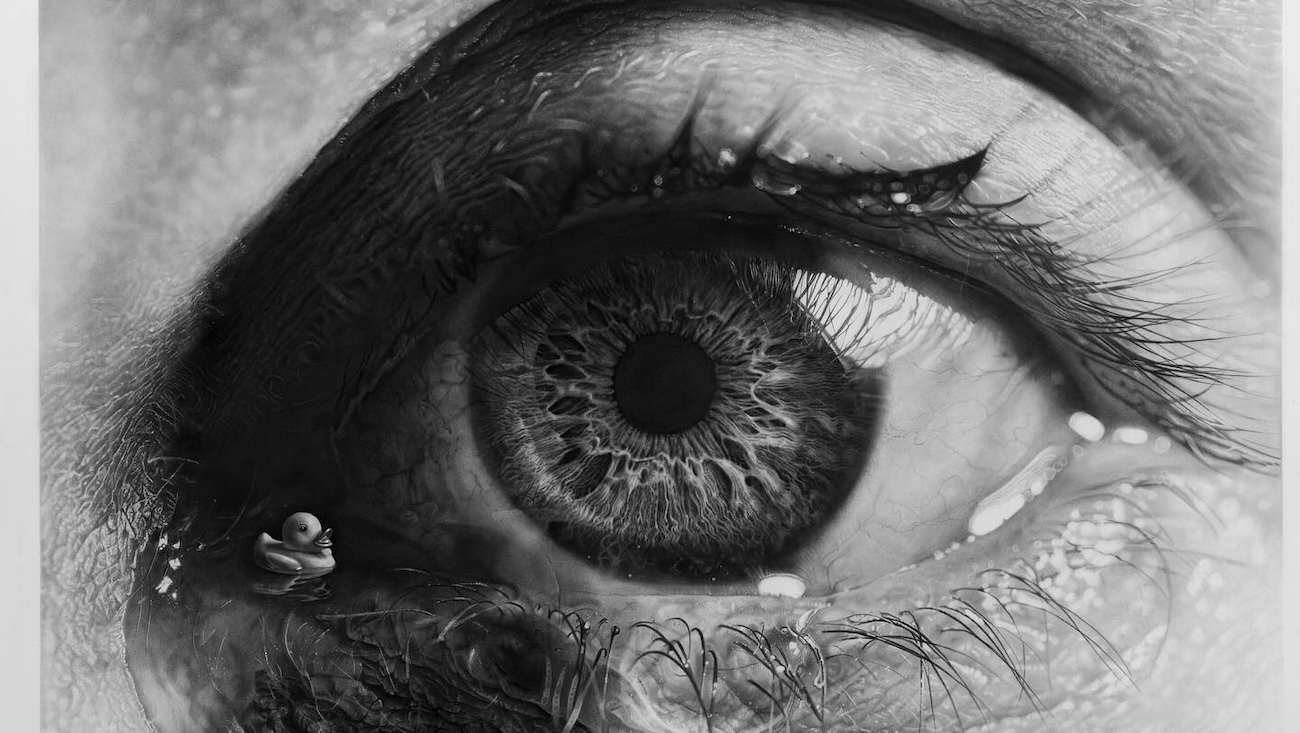
“Tear Duck”
What’s your artistic background?
My mom is an artist, so she was very encouraging. She wasn’t forceful with “you should draw,” but she definitely had a pencil nearby. I have ADHD, and I had an extreme problem with boredom growing up, and both my parents worked. So I had a lot of free time, and I was painfully bored. And so drawing was kind of an escape for me.
I was also really obsessed with Lord of the Rings and high fantasy. And so I think just like copying scenes from Lord of the Rings was a source of a lot of catharsis for me as a kid, and then I took that into high school and had art as a subject in high school. I had some extremely talented friends who could draw very well, and we got competitive with drawing, trying to one-up each other. And the easiest kind of benchmark with this kind of thing was degrees of realism because you have something to gauge it against: how accurate you’re getting it to look like a photograph. It was easy to tell if we had done a good job or a bad job and took the somewhat subjective nature of it out.
How did you cultivate your style?
Realism by itself, I find a bit boring. It can be quite interesting if you think about its honesty, its raw nature, and trying to depict life without any of the bells and whistles and the frills. It’s trying to be a super honest medium. And conceptually, that’s interesting. But in practice, I was still needing to escape into a fantasy world, and so I started to try these fantastical scenes and almost feelings of loneliness and isolation depicted in a hyper-realistic way. That’s the easiest way to describe how the style came about.
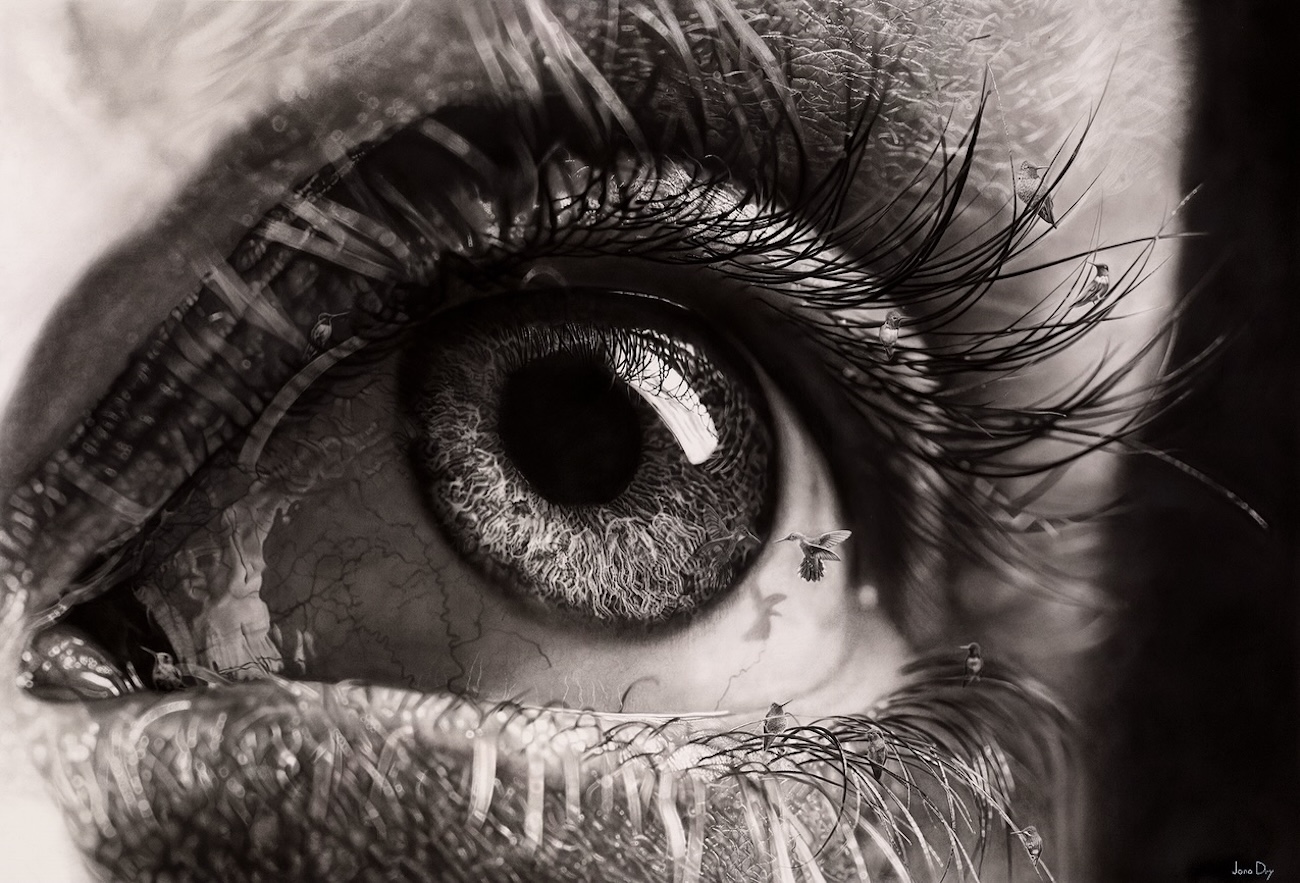
“Capturing Stillness”
You’ve mentioned the Lord of the Rings series, but what else inspires the surreal side of your work?
Storytelling is quite an important thing, and I feel like surrealism allows for storytelling, and more flexibility with storytelling. I really love a sense of wonder, and surrealism can also be a kind of escape into wonder and playfulness that I don’t quite experience with realism.
I’m also really interested in absurdism. I haven’t practiced it that much in my drawings. My drawings are primarily focused on my struggles with mental health and isolation, loneliness, and anxiety, but there is a very strong, absurd thread that runs through me, and surrealism is kind of still the key for me in that space that I hope to one day really explore more.
There’s a lot of real-life experiences that have inspired me in an absurd way. I’ve got, fortunately, a really wonderful group of friends who love just being absolutely ridiculous and celebrating and celebrating the smallest, most almost insignificant things. It creates an irreverence in life that makes it really exciting to live. They’ve inspired me a lot, and I’m quite keen on actually working on a series of artworks that depict the things they celebrate. It feels kind of more in line with Hieronymus Bosch-type absurdism, which feels really exciting to me. Then books. I’m into high fantasy, or I enjoy getting lost in fantasy worlds, and then also just reading complete trash as well, which feels like it dilutes some.
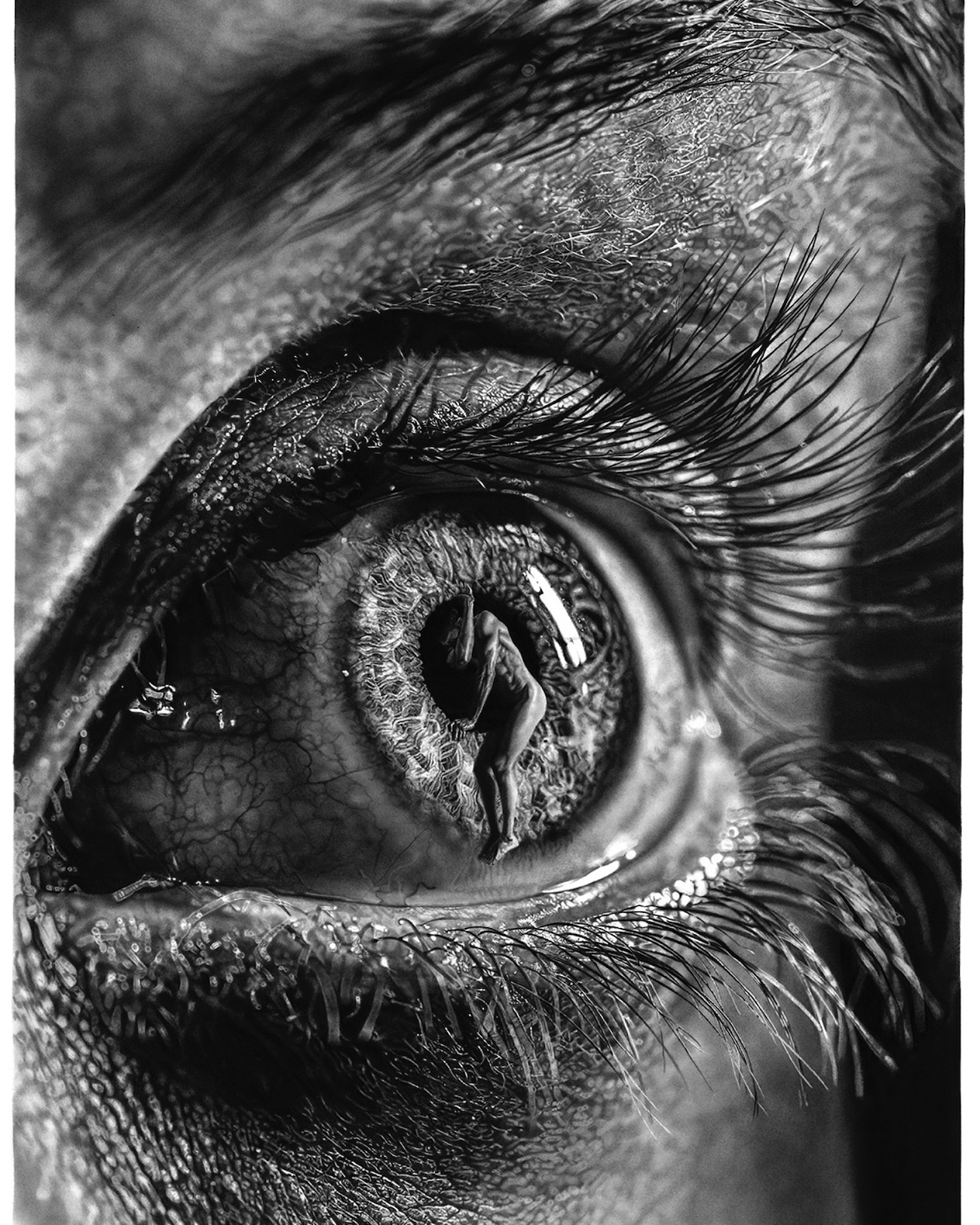
“Pupil”
You’ve said that with your piece titled Pupil, you almost gave up on it many times. Can you first discuss conceptualizing this piece?
The conceptualizing took a long time. With the planning, I went to a huge amount of effort to try and capture reference images to educate myself on the level of detail that I wanted to try and capture. The simple idea was that I really just wanted to challenge myself. I wanted to draw the absolute most ridiculously detailed thing I could possibly do. And since eyes have been a benchmark for me, it made sense that I do it with an eye. I wanted it to be a breakthrough piece for me, almost before I did it.
I wanted it to be super detailed. I had ambitions about it, and I went to great detail to get a ton of reference photos, and then eventually started drawing. I also did a ton of research into light and how to photograph eyes in a way that would really bring forward this element of realism. So, that meant capturing all the tiny little hairs around one’s eye.
What caused you to feel like giving up?
When I was excited about the reference image, I started drawing, and it just slowed way down. After three months of drawing every day, I was also in my room, and I was isolating myself during the process, not intentionally, but it’s just the nature of it. I think I just started getting depressed, and I started feeling like a failure, and I had somehow hinged parts of my identity onto this piece, that this was going to be a breakthrough. This was going to be the most detailed thing I could do, and it kind of beat me up. I think I was struggling quite a lot financially as well.
So it was almost a perfect storm for me, being isolated in my apartment, failing with this drawing that was meant to represent me. And then I went on to other drawings to try and offset it, to try and get a sense of gratification. And then those drawings felt half-hearted, and it felt like this thing haunting me in the cupboard, which was this drawing that I kept putting away. It was just a horrible year, to be honest.
It’s horrible to go through those things. But then the reason I titled it Pupil was because, having finished it, it was something that I drew upon. It was almost like no matter what project I put out for myself, from that point, it felt doable in comparison. I also learned a lot about my dopamine system, my need for gratification, and setting goals for myself. So it’s all fine to set lofty goals, but then to be realistic and incorporate a couple of breaks with that project, and to reassess how to tackle things like that.
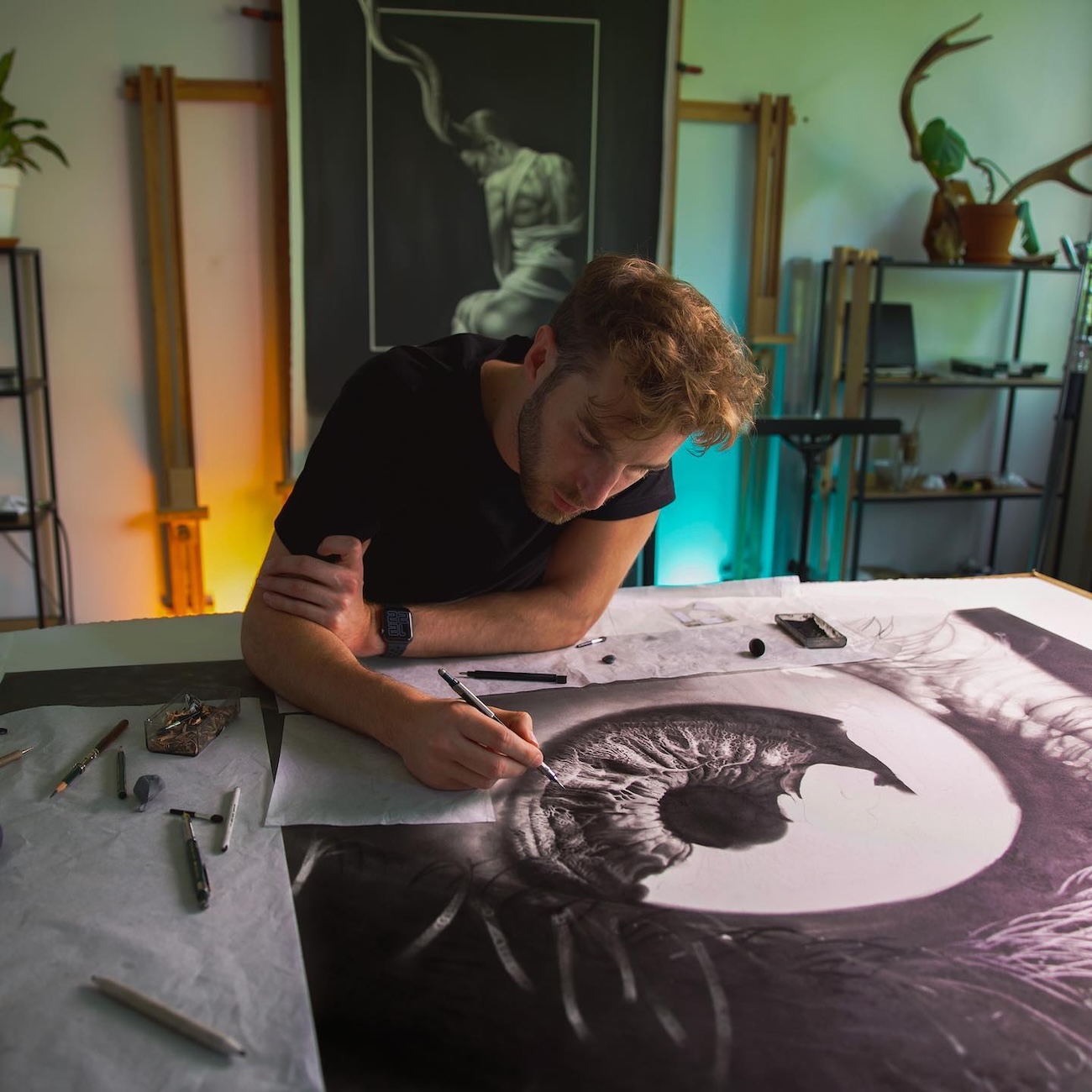
It sounds like Pupil helped shape how you approach your work, from a logistical standpoint, moving forward.
Definitely. From a technical perspective, it taught me a lot as well. There were a lot of textures and things within that drawing that I had never done before in that way, and I was forced to try and develop new techniques to get those textures. And then also in terms of grit and just psychologically, what it takes to take on a task that is six months of work every single day with very slow progress.
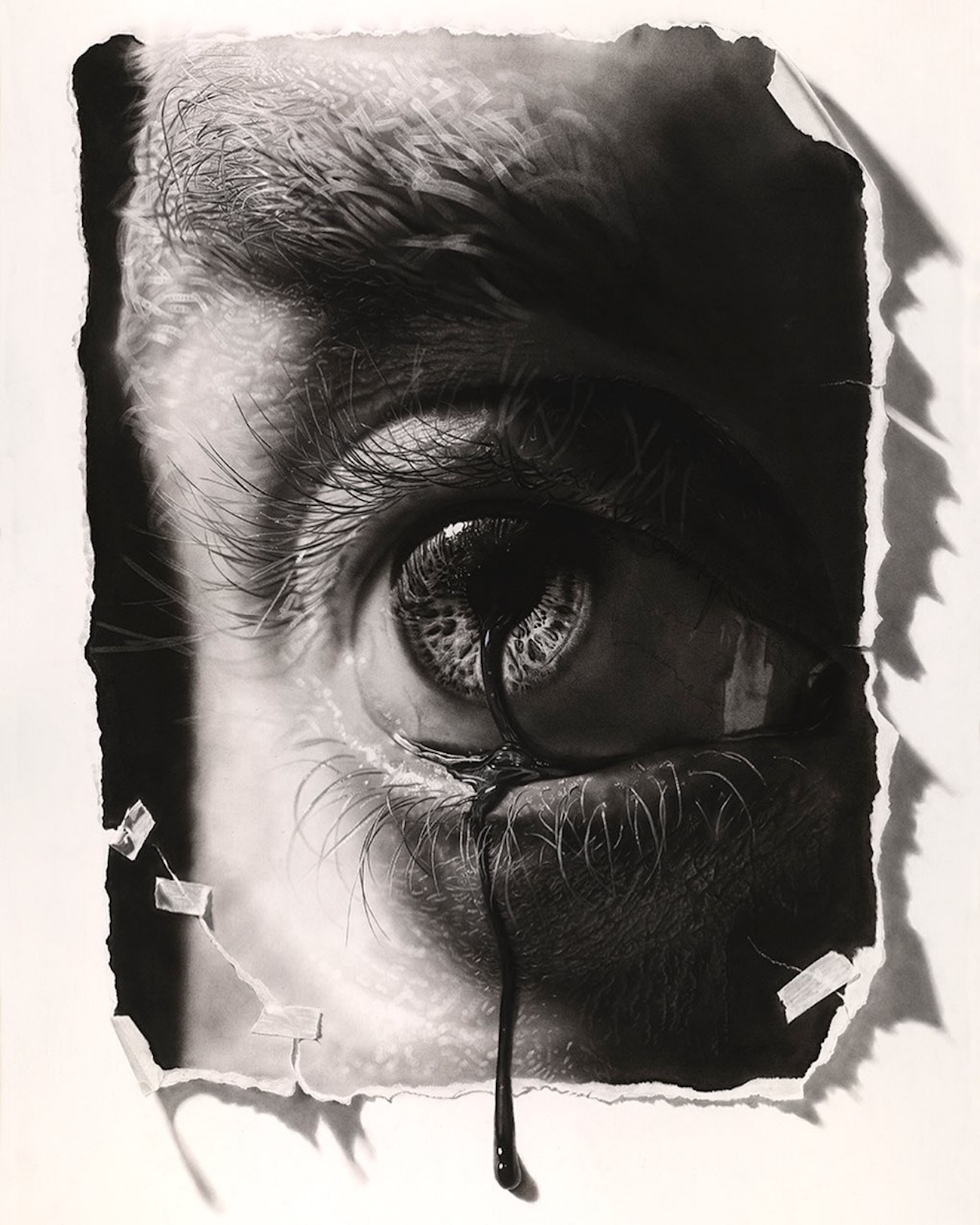
“I Can Fix This”
As we wrap up, you’re developing an artist residency program. Can you tell us more about it?
It’s still in its infancy. I just signed the lease a couple of months ago, and it’s a huge risk. I’m basically just creating a space with all the resources that I use for my practice, and then first inviting local artists to trial run it. We’ll open the invites to international artists later.
I’m working extremely intuitively with it, so it feels very much like it’s happening rapidly, and I’m kind of just hanging on for dear life. But every step that’s happening feels right. I don’t want to put the brakes on it, but it is a huge risk. It’s self-funded for now. I’m going to be applying for funding in the next couple of months through the South African government; hopefully, that works out.
I have a strong sense that building community is the way to go, and there’s cross-pollination with ideas and creativity, and creativity thrives when there are a couple of minds put together. I suppose that harks back to my experience in high school, of that, like competitiveness, but also the co-critiquing and building each other up.
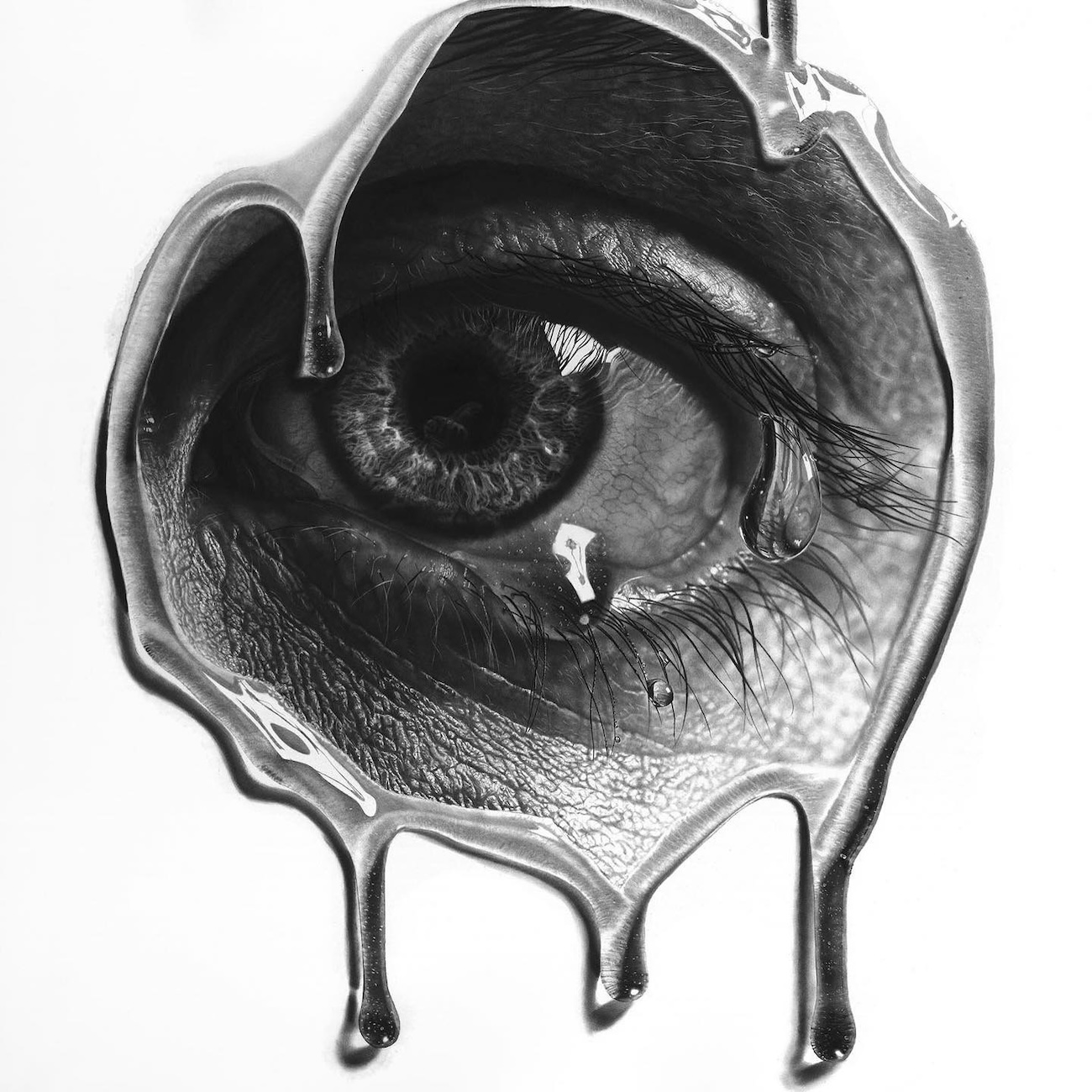
“Honey”
Jono Dry: Website | Instagram | YouTube
My Modern Met granted permission to feature photos by Jono Dry.
Related Articles:
Artist Creates Hyperrealistic Paintings Teeming With Microscopic Details [Interview]
18 Best Drawing Pencils for Professionals and Beginners Who Love to Sketch
Artist Shares Secrets of How To Draw Incredibly Realistic Portraits [Interview]
Amazing Hyperrealistic Portraits Capture the Fine Details of Complex Emotions

![Jono Dry Shares His Toughest Hyperrealistic Drawing [Interview]](https://www.newsbeep.com/us/wp-content/uploads/2025/07/jono-dry-hyperrealistic-drawings-thumbnail.jpg)